My short story ‘Messermeisters’ is out in Storgy Magazine: a set of knives wreak havoc at a dinner party. Here it is!
https://storgy.com/2017/06/07/fiction-messermeisters-by-erma-odrach/
My short story ‘Messermeisters’ is out in Storgy Magazine: a set of knives wreak havoc at a dinner party. Here it is!
https://storgy.com/2017/06/07/fiction-messermeisters-by-erma-odrach/
Carcross, Yukon, Canada: A small community with a big history. A short story from Alaska or Bust and Other Stories.
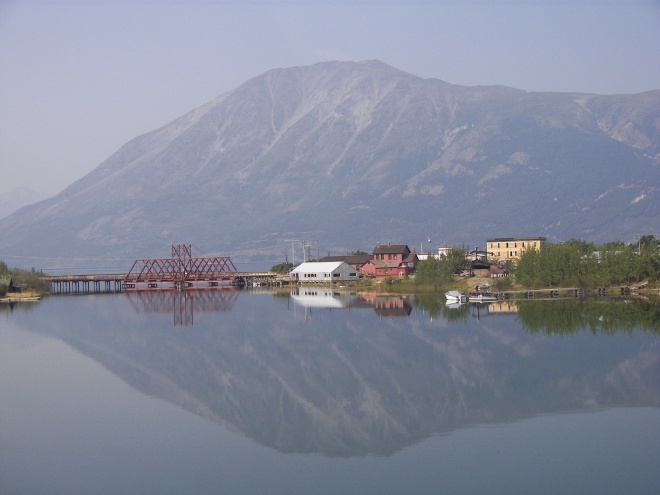
It was a Sunday afternoon with not much to do so we drove down the South Klondike Road to the picturesque village of Carcross. Built on the shores of choppy Lake Bennett, there was breathtaking wilderness all around. Mountains covered with carpets of wildflowers – red, yellow, pink, blue and orange – were as if not of this earth. Their exquisite scent filled the air. The main street was broad and dusty and burned with a heavy sun. The odd pick-up truck creaked by with a husky dog or two in the back, and then came the sound of tour buses filled with visitors, some off the cruise ships in Skagway, others directly off the Alaska Highway. The village was so small that with a blink of an eye one could easily miss it, but it was of historic significance. And who would have thought it came in “first” in several categories: for example, it had Canada’s first and oldest-running post office, the Yukon’s first operating general store, the territory’s first hotel. Home to the Tlingit First Nations People later it became a part of the historical mountain route taken by the Klondike gold seekers of 1898. During that time thousands of people filled the village and more kept coming in. The few inhabitants who lived there today were very proud of their history and welcomed the many visitors who traveled there during the summer months.
We stopped at the Caribou Hotel for homemade pie and ice cream. There were plenty of people in the restaurant, mostly from the tour buses, and they were sitting at tables eating and engaging in light conversation. The restaurant was a big room with a sense of space and it had a high ceiling and was full of light. Up against a huge picture window was a cage and inside the cage was a parrot. On the other side of the room, there was another cage with another parrot. How unusual for these brilliantly colored tropical birds to be here in the far north living upon permafrost. They appeared to be listening closely to what the guests were saying and they looked very intelligent.
A largish woman of late-middle-age and smelling of lilac perfume sitting at one of the bigger tables was telling her company a story and she looked very much involved. Wearing a little plastic badge with her name on it pinned to her bosom, she was one of several tour guides in Carcross. Noticeably animated she was talking about the Gold Rush days of ‘98 and about a parrot named Polly that had come to live at the hotel; in fact, in that very same dining room. She obviously was an expert on the history of the area and she took her work seriously. Her guests listened with excessive interest.
“You see,” she said raising her head, her voice in a sing-song, “Carcross was an important stop-over for the gold seekers on their way to the Dawson City gold fields. It was simply madness around here with stampeders passing through from all over the world hoping to strike it rich. They were brave souls these men (and women) with unforbidding spirits out to conquer the brutal wilderness. But the language they used: foul, foul, foul! And there was no limit to their drinking either.
“Polly the parrot was brought up the treacherous Chilkoot Pass by his owner and that’s when he came to live in this very hotel. Before long Polly too started becoming just as foul-mouthed as the miners. And the things Polly didn’t say! You wouldn’t believe. He said damn, hell, shit, son-of-a-bitch and a lot more. He bit people too and it was said he took to drink worse than a drunken sailor; scotch apparently was his drink of preference. This profanity-spewing bird became famous, or rather, infamous and people around the world came to know of him. He was heralded as an outstanding opera singer too and his favorite tune was The Barber of Seville. When he died he was 125 years old and he outlived most of the gold seekers. Mourners and important people from all over the territory came to his funeral. He’s buried right here in the Carcross cemetery.”
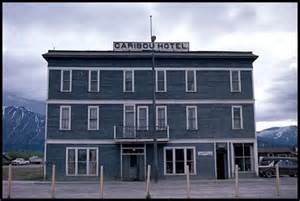
The bird by the window that was the more sociable of the two was listening intently. He made some kind of rustling sound and then waved his claw. Looking rather agitated, his wild instinct was to scream and that’s exactly what he did. He screamed, “Carcross cemetery, he’s buried right here in the Carcross cemetery!”
The guide didn’t appreciate being interrupted and gave the bird a stern, overdrawn look, but the bird kept at it. She tried to stay calm. There were more stories for her to tell, and when the bird finally settled down, she started in on the building of the White Pass railway: “The railroad was built during the gold rush days and over the most hazardous land. Its aim was to carry supplies and miners to Whitehorse, where they could continue on to Dawson by boat. Many said the tracks couldn’t be built through the granite of the Coastal Mountains. With 35,000 men on the job eventually the narrow gauge line was finished, all 112 miles of it from Skagway to Whitehorse. Still today they call it an engineering miracle! But the scenery is breathtaking – the mountains, the glaciers, the gorges, the waterfalls, and the wildlife couldn’t be more abundant – if you get lucky you might even see a bear! The train ride is the most popular shore excursion for people coming off the cruise ships in Skagway. I took the journey many a time, and each time was better than the last. But oh, the one problem is it’s so tight in there and there’s nowhere to move, everyone’s practically on top of one another. And the seats couldn’t be closer together. The last time the man next to me was practically sitting on my lap!”
![BonVoyage-YukonTrain[1].jpg](https://ermaodrach.files.wordpress.com/2016/11/bonvoyage-yukontrain1.jpg?w=660)
Suddenly there came a movement from the window – it was the bird again. He was hopping around in his cage and it was starting to move back and forth. He began screaming louder than before, repeating what the guide had just said. And this time he seemed to be laughing at her and mocking her too, “Practically sitting on my lap! The man was practically sitting on my lap!”
Giving the bird an angry look, the guide clenched and ground her teeth. She wasn’t about to have some feathered fowl steal her show. Trying not to lose her temper, she shouted back at him, “Shut up you stupid bird, just shut up!” When he wouldn’t stop she only shouted louder and then there came a shouting match between them. The guests were finding amusement in what was going on, their eyes on the bird, then on the guide, and then on the bird again. They started rooting, some for the guide, others for the bird.
A tall man in jeans and a blue T-shirt pausing by the door had something to say, and there was disapproval in his voice, “The bird must be going insane in captivity. How would you feel locked up in a cage day in and day out with no fresh air, no exercise; and how old is he, fifty, a hundred? A hundred years in a cage!”
Everyone took what the man said into consideration and they started feeling sorry for the bird. But the standoff continued. Somehow after several minutes things quieted down.
There was more on the guide’s mind and she was excited to start in on her next round of stories. She now wanted to talk about the boat building industry that sprung up along the shores of Lake Bennett before the railroad was put in. She began, “If you all look out the window to your left you can see Lake Bennett through the trees. That’s where they built boats to travel down the Yukon River to get to Dawson five hundred miles away. At the height of the gold rush, 3,000 boats were built in one month, if you can believe that! So many trees had to be chopped the whole area became deforested. Why, hardly a tree was left standing; spruce was mostly used. Even the steamboats were built here, but their boilers and engines had to be hauled over the Chilkoot Pass.”
Pausing briefly to take a drink of water, looking at her audience, she was very pleased with how things were now progressing. Then to her dismay, the bird started up again. He now seemed more restless than ever. He was making such a ruckus many guests had to plug their ears with their fingers, some even picked up and left. He repeated over and over, “Chilkoot Pass! Chilkoot Pass!”
![Miners_climb_Chilkoot[1].jpg](https://ermaodrach.files.wordpress.com/2016/11/miners_climb_chilkoot1.jpg?w=660)
“That’s it!” The guide slammed her fist on the table. “Damn you!” she shouted. “I’ve had enough of your squealing! I’ll show you!” Getting up from her chair she made for the cage and gave it a shake. When the bird wouldn’t stop raving she shook it harder but this only made him more aggressive and demanding. Not knowing what to do next, at the end of her ropes, she stuck her hand into the cage and gave him a knock in the head. The bird, flapping his wings, swinging round, in return bit her in the finger. This was now turning into an all-out fight, a real showdown. The guests cheered and clapped and egged them both on. Then somehow in the scuffle losing her balance the guide hit up against the side of the cage and both she and the cage went crashing to the floor. Somehow the door flew open. The bird got out! Everyone started to scream in panic, some made a run for the door, others hid under the tables. Mayhem ensued.
The proprietor, a little man with a bushy beard wearing a baker’s cap came rushing out of the kitchen to see what all the commotion was about.
The bird had flown up and had secured himself on one of the chandeliers and he was perched there unmoving not saying a word. He was acting very strange and he was no longer quarrelsome. What was wrong with the bird? It was as if a feeling akin to terror had overtaken him and he even appeared to be shaking. He looked very sad and his eyes were clouded. He was staring at the window.
As it turned out a sandpiper had landed on the sill and that’s what had caught his attention; he watched the little creature with great intensity as he hopped about, bobbing his head, shaking his feathers. This is what was going on in the parrot’s mind: he was wondering what it was like on the other side of that pane, to be that sandpiper, to be free. When the little bird, at last, picked up and flew away, it did so just like that, carefree and with no restrictions. But he too was meant to fly just like that sandpiper and to seek the companionship of birds. He imagined he wasn’t really on the chandelier anymore but on Lake Bennett high up in one of those spruce trees he had heard so much about. And now he was flying along the shores of the lake, with each minute soaring higher and higher, going farther and farther. He was now flying great and unbelievable distances and Carcross was miles behind him.
Meanwhile, the proprietor was full of grief and determination, and he was trying to think of ways to get the bird down. Finally, an idea came to him. He called out, “Come on Desmond. Come on down. I have a juicy fat apricot for you, your favorite. And look, I went shopping yesterday and bought you this tree branch perch for your cage, and it came with a ladder too. It’ll cheer you up. Come on Desmond, come on down!”
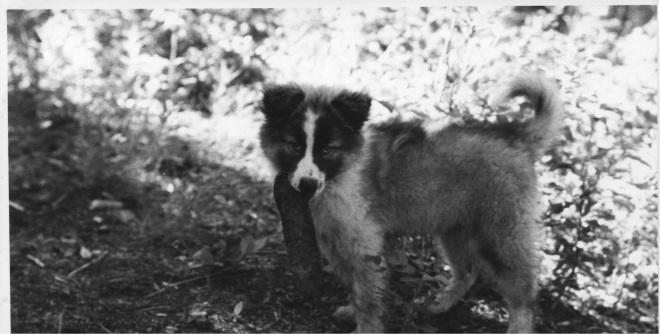
I was living on Squatters’ Row in a cabin in the Yukon outside of Whitehorse and one day a dog down the road “Gypsy” gave birth to six puppies. I went to have a look but there was only one left and she was the cutest little fluff-ball hiding beneath the stairs of the cabin. She looked at me with her sad, brooding eyes and I at her and it was love at first sight. I named her Keesho.
My place was a little cabin in the woods and life back then was slow and easy. There was a creek filled with brook trout, and running around were lots of small animals such as red squirrels, grouse, and foxes. That suited Keesho just fine and she spent her days chasing after them though never hurting them. We’d go for endless walks in the forest, wade in nearby lakes, pick berries. Yes, we lived the simple life. When we went to town she would ride in the back of the pickup truck with the wind in her face. Once in town, she waited patiently until I finished my errands. We would go on trips – all around the Yukon and Alaska – Dawson, Haines, Carcross, Fairbanks, Top of the World Highway, the Dempster. We went everywhere together. When I was sad she was sad, when I was happy she would jump and wag her tail.
Eventually, our days in the Far North came to an end and we moved to the big city of Toronto. Keesho, being a bush dog adapted surprisingly well – she took to riding streetcars, scouring the streets for sausages, exploring back alleys. When we traveled to the Maritimes, she loved it, especially the ferry ride to Prince Edward Island and not to forget the beautiful Cabot Trail. We went to New York City together and she spent time walking and sniffing around Soho, the Lower East Side, and Times Square. In Florida, she loved the Keys and splashing around in the Gulf of Mexico.
Then one day I found lumps on her chest. It was a diagnosis I couldn’t bear to hear. The vet said the cancer had spread and was inoperable. Within a few weeks, my best friend was gone forever.
But she wasn’t gone forever, not really; I dream about her from time to time and she always brings a smile to my face.
Here’s my interview at #christawojo.com, Twitter expert extraordinaire!
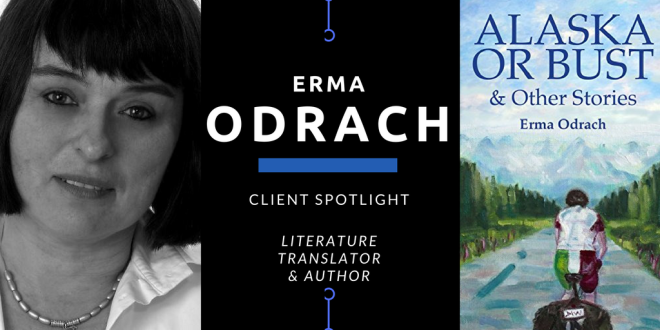
View original post 948 more words
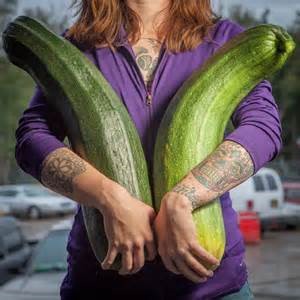
In Alaska, especially in the Matanuska-Sustina Valley (40 miles northeast of Anchorage), vegetables grow to enormous sizes. They grow so big they become unrecognizable. Imagine a 35-pound broccoli, a 138-pound cabbage, a 30-pound zucchini, a 68-inch long gourd.
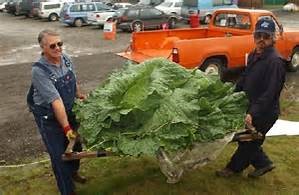
There’s lots and lots of sun in Alaska and that’s why produce grows so big. Though the season of 105 days (compared to California at 300) is very short, in the summers there’s almost 19 hours of sunshine each day. Due to it’s close proximity to the North Pole, no long, dark summer nights for Alaska!
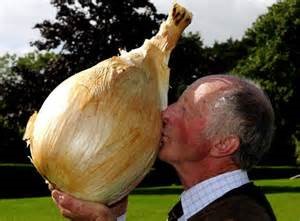
And so veggies in The Land of the Midnight Sun keep growing and growing. Farmers and gardeners there produce some of the biggest veggies in the world, and the tastiest!
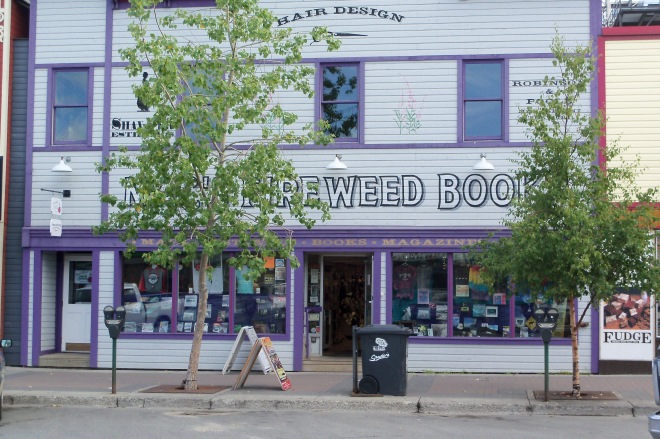
In my twenties, though I’d already done some traveling throughout North America, after my first year at the University of Toronto, something pulled me to the Canadian Far North. Without any particular plan in mind, job, or much money, I jumped on a train and for some reason landed in the Rocky Mountains. (It was so beautiful and dramatic there and I remember taking quick dips in the Athabasca River, which was ice cold.) I met up with a couple of random people there, who were looking for something to do for the summer. I suggested the Yukon and maybe even Alaska. They thought it was a good idea, so the three of us got on the road and started hitch hiking. We were on our way. Rides were pretty good even though there were three of us. When we got to Dawson Creek, Mile 0 of the Alaska Highway, an Alaskan from Anchorage offered us a ride. But he had a flatbed truck with no room in the cab (he had three dogs in there), so if we wanted he said we could ride in the back, in the open. We decided to go for it. Everywhere was wild, pristine and beautiful – mountains, rivers, lakes, and fireweed growing all around. So after a thousand miles of dusty, gravel road, the dust on our bodies and in our hair was so thick you could cut it with a knife. A huge tarp sheltered us from the rain. We had many adventures along the way – bears, moose, rock slides – and many more after that. I remember eating a lot of canned sardines and granola, and sometimes even together. UGH!
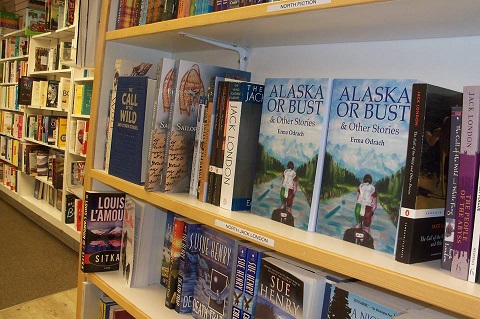
Fast forward a couple of years. I landed a job at Mac’s Fireweed Books, the only bookstore in Whitehorse, maybe even in the entire Yukon at the time. It was a great place to work and had an excellent collection of best sellers, classics, and northern books. A lot of people came by, especially travelers on their way to Alaska. It was a thriving place, and despite online competition, today I’m happy to say, it is still thriving.
So now, there it is, Alaska or Bust and Other Stories, after all these years on the shelf at Mac’s Fireweed Books, where I once worked. It’s like going home. The photo was taken by Marcel Gareau, who has a home in Whitehorse and who happens to appear in some of the stories, of which there are 25.
This interview with Erma Odrach represents a lovely surprise that recently came my way. I’ve always been a fan of the short story form as well as enamored with the wilderness and remote areas thanks to my stint working in Yellowstone National Park during my college years. Alaska is on my list of places I long to see, so I’ve added her story collection to my reading list. If you are drawn to the mystique and allure of Alaska, I hope you will add her book to your reading list as well.
Official Bio: Erma is Canadian and lives in Toronto with her family, cat, and dog. Alaska or Bust and Other Stories is her first book of fiction and is largely based on the time she lived in the Yukon/Alaska region. She has a love of the North–the beauty, the wild, the pristine rivers and lakes. Also, she’s been a lit translator for many years, translating the works of her late father, Theodore Odrach.
1. Please provide a brief synopsis of your book.
Alaska or Bust and Other Stories. Funny, serious, quirky – the reader is taken off the beaten path on a sub-arctic journey, where the land is raw and beautiful and larger-than-life. Though the stories are fiction, they are all drawn on real events and people. Allow me to introduce you to a few of my characters and to show you how I took them from being real to not so real:
In “Luke’s Libido” Luke from Fairbanks turns things upside down with his high-running libido. ‘Luke’, though not his real name, existed and worked in a small shop selling men’s products. I changed his hair from blond to black, made him more aloof, and gave him a pick-up truck to drive instead of a Volvo. There was always a lot of gossip surrounding him, and I drew on that.
In “The Really Big Nose”, Daphne is a vaudeville performer in Dawson City and she has a really big nose–she re-enacts the wild and crazy gold rush days of 1898. To disguise her I gave her an even bigger nose, made her skinnier, and gave her a green and white parasol to carry around.
In “Alaska or Bust”, Giorgio, a fancy Italian tourist cycles up the Alaska Highway and gets mauled by a bear. Though it’s true, he did get mauled by a bear, in reality he never owned a pizzeria and he was from Naples not Florence. The women went crazy for him.
In “Chuck Goes to Haines Alaska on the Fourth of July,” Chuck, a street-wise city mongrel jumps out of the back of a pick up truck and gets lost in the wild. I kept Chuck true to himself; after all, he was just a dog.
There are 25 stories in total.
2. Tell us a little bit about what motivates or inspires your writing.
It’s quite simple really, I write because I enjoy it, it takes me to another world, and in that world I am free to do and say as I please. It’s also a great form of escapism, maybe even therapy. My father was a writer and immigrated from Belarus to Canada. I spent a lot of time translating his work (fiction) into English. My translations have appeared in many magazines such as Connecticut Review, Mobius, the Penguin Book of Christmas Stories and more. In 2008 Wave of Terror (a novel about Stalinist occupation during WWII) was published by Chicago Review Press. So, I guess writing has always been a part of my life in one way or another. My father is my inspiration, though he died when I was nine
3. Writing aside, what passions drive your life?
I have two daughters and it’s great having watched them grow into adulthood and with all the happy and difficult moments along the way. It’s fun to chill with them or maybe go for a coffee and shoot the breeze. Also, I love architecture, live theatre, biking, and where food is concerned, curry, sushi, watermelon, and yogurt.
4. It’s hard to pick just one, but what do you consider your favorite novel and why?
I lean toward the Russian classics, and if I had to pick one, then I would go for Crime and Punishment by Dostoevsky, and maybe The Idiot too. I love how his work is so full of different voices and perspectives, and it’s all so confusing and unwieldy, and then everything gets sorted out and comes together in the end. His characters are all believable, and there’s psychological tension and inner turmoil, especially in Raskolnikov’s case, as he struggles with the guilt of his crime. Another favorite is Mihail Zoshchenko, the satirist. Of the more modern writers, I like Victor Pelevin, who writes post-modern, eclectic fiction but carries on with the Russian tradition of black humor. Good writing inspires me overall.
5. What is the name of your blog and what can readers expect to find there?
My blog is called Bank Street, which I’ve recently started up. It’s a meeting place, a community, a neighborhood, where people get together, do their own thing and share poetry, book reviews, craft sales, book excerpts, interviews and more. My blog’s name comes from a novel I’m working on, which is set on an inner city street called Bank Street. Here are some of the people that live there: Theodore, the tormented writer; Pavlo, the armless painter; Christy, the not-so-happy divorcee; Antonia, the man-killer; Rogerio the bootlegger; the Lemon Bucket Orkestra and more!
6. What does your drafting and/or editing process entail?
I like to write in the morning if I can, when I am most alert. Though I start with an idea, I never know where I’ll end up and sometimes I surprise myself, for better or for worse. It’s always fun. Also, I belong to an authors’ group and we get together and share. My editor is Veronica Castle at Crimson Cloak Publishing and she’s great.
7. Are you traditionally published or self-published?
I’m traditionally published by Crimson Cloak Publishing, a small but very active and eclectic press in Missouri. They provide all the editing, do the formatting etc. Promotion is something we do as team, but that’s true of most publishers these days. It’s tough out there! The cover for Alaska or Bust is an oil painting by Leslie Dolman.
8. Can you offer one or two helpful tips for fellow writers when it comes to marketing and publicity?
As we all know, online marketing is invaluable, though oversaturated, where the same marketing tips seem to get regurgitated over and over. It’s good to take a break from it all and try and meet up with your readership face-to-face such as in libraries, book clubs, book stores, cafes, readings and so on.
9. What future projects can we look forward to?
I’m working on a novel, which focuses on a street called Bank Street in Toronto, and it’s all about the people that live there. Characters are a central element to all storytelling–they have to show a range of emotion such as fear, sadness, anger, excitement, happiness and so on to make them believable. Bringing them to life is one of my favorite challenges. Everyone on Bank Street is up to something, and they all exist(ed), though mostly in a vague, abstract sort of way. They do a lot of oddball things–they drink way too much, hoard cats, bootleg, even kill. The book, though serious, also has considerable humor.
10. Is there anything else you want your potential readers to know?
I’ve been called a turtle, which may be true, but I’m more like the turtle in the Turtle and the Hare. For example, not too long ago a friend of mine and I were late for an event. He was rushing, telling me to hurry. I took my time and got there first. He went the wrong way. I pace myself in my writing.
Here’s a write-up for Alaska or Bust and Other Stories in the Mississauga News by Chris Clay.
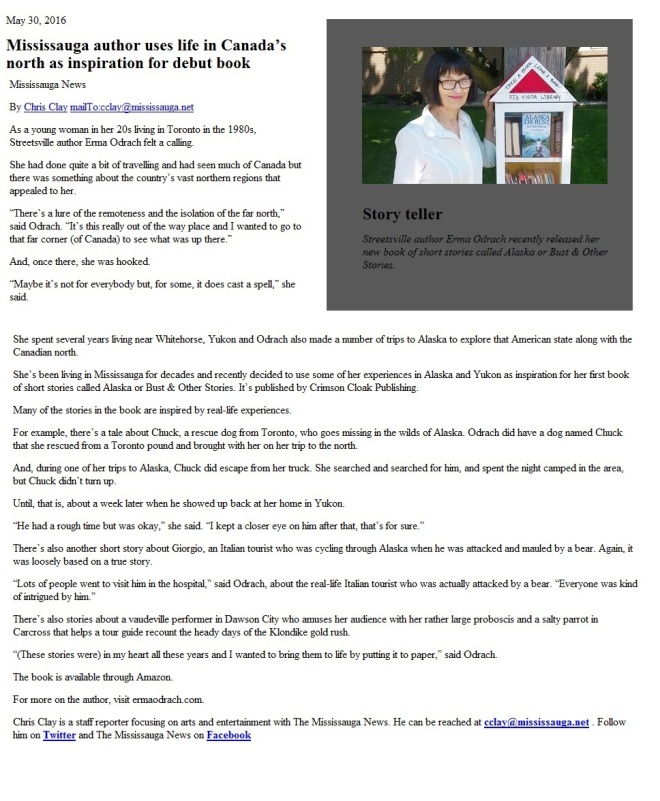

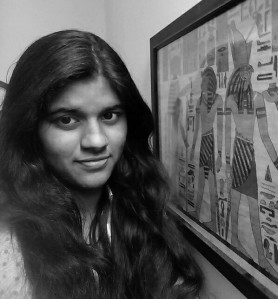
BIO
Prapti Panda is a fifteen-year-old blogger and upcoming author who lives in India. Apart from being a voracious reader and a history buff, she is also a staunch animal rights activist. There are only two things in this world that rival her love for writing – archaeology, and her parakeet. When not typing away on her laptop, you can find her hanging out with the numerous animals she has adopted over the years.
Her blog – www.praptipanda.wordpress.com
How old are you? Why and when did you start blogging?
I’m fifteen years old now, but I set up my first blog when I was eleven. I have always been obsessed with wildlife and my first blog documented my experience with animal rights activism and wildlife photography. I think I started blogging because it satisfied an innate need in me to be heard.
On your blog you interview authors. How do you go about choosing them?
I scour Amazon a lot and check out random books. You’d be surprised to see how many books are out there that have wonderful literary merit and a gripping storyline, but are sadly not in the spotlight. Hence, I fish out those books that are extraordinary and bring them to light through documenting the authors’ journeys of their creations.
You like to read the classics. Who are your favorite authors?
Oh, the list is endless! I love Hardy, the Bronte sisters, Chekov, Dostoevsky, Goethe, Dickens, Hawthorne, Wilkie Collins… But I think the authors who influenced me the most are definitely Goethe and Miguel de Cervantes. Although their books are not originally in English, I found that their words and their representation of life struck a chord within my heart.
You have an archeological thriller coming out. That’s impressive! Tell us about that.
It’s a book basically about some people who are trying to track down the lost city of El Dorado. Most people know about the Spanish conquest of South America and the conquistadors’ greed for gold, which gave rise to the myth of a city built entirely of gold existing somewhere in the Andes. After the Spaniards, the English, the French, and even the Germans sought the elusive city of gold, but perished in the act. So if one supposed for a minute that it was not a myth, wouldn’t it be interesting to know where the city might actually be?
As I’ve been studying the history of Latin America for many years and am an expert on pre-Columbian civilizations, I decided to mix history, facts, and imagination together and come out with this adventure book that will take the readers on a journey that they will never be able to forget. For updates and exclusive tidbits, you can check out this page – http://www.facebook.com/authorprapti
You won a literary prize for India. Can you tell us about that?
“Write India” was an 11-month-long writing campaign by The Times of India, one of the leading newspapers in India, involving short story writing on the basis of prompts. I’m glad to say that my story was selected as one of the winning entries, and I was graced with the title of “Write India’s Youngest Winner”.
What are your three favorite foods?
Buttered scones, enchiladas and chocolate mousse. Not in that order!
How many languages do you speak? Which are you most comfortable with?
Apart from English, I can speak Hindi, Sanskrit, Spanish, German, a little French, some Italian, and I’m also trying to learn Russian right now. I’m most comfortable with English, but my Spanish is also very good.
What are your favorite subjects in school?
Truth be told, the subjects that are not taught in school are my favourites! Still, I love my literature class and I always look forward to history lessons.
What is in the future for Prapti Panda?
Hmm… This is a tough question. First, I have to get my book completed and get it published as soon as I can. After that, my whole attention would be on my studies, as I hope to become an engineer some day. Or maybe I will change my mind and go over to archaeology as it’s one of my favourite subjects. Still, one thing’s for sure – my need for writing will never ever go away.
Thank you so much for dropping by Bank Street! It was a great pleasure. Best of luck with your future endeavors. We will be seeing great things.

A great suspense-thriller! Highly recommended By EO on May 24, 2016
With John it’s always something, a bacterial infection, a ruptured spleen, bruises in various stages – black, purple, blue, green, and yellow and more. There is no break in the story from all his troubles, it’s one thing after another and no doctor can figure it out.
But the novel is not just about sickness, its focus is on an exploration of the psychology between two people and how their lives become inter-dependent. John is very ill but he is also manipulative and uses his illness to control Suze, who will do anything to soothe his aches and pains. And there is no end to her grief, “I broke down and wept all the way to the hospital, emotionally replete and beyond self-consciousness.” The more Suze worries, the more control John has over her.
However, things start to unravel when Suze finds a hammer beneath the bed, auto coolant with a broken seal, and a syringe filled with a strange substance. It is at this point that everything comes to a dramatic end. As Suze finally figures things out, John confesses, and gleefully at that, “Yes! Yes. You got it… You’ve finally figured it out.”
But their journey doesn’t end there or does it? Will Suze feel compelled to continue looking after John now that he is maybe even sicker than before? Will we find out in a sequel? Looking forward to it!
Christa Wojciechowski’s prose is compelling and unadorned, and she effortlessly breaths life into her characters. A great suspense-thriller! Highly recommended.